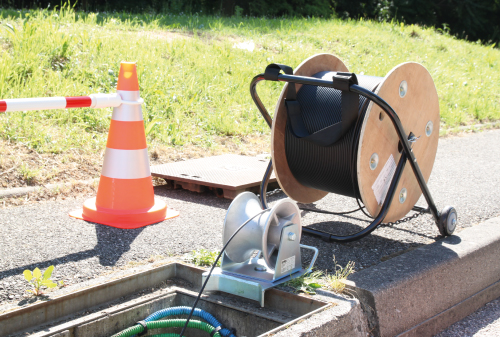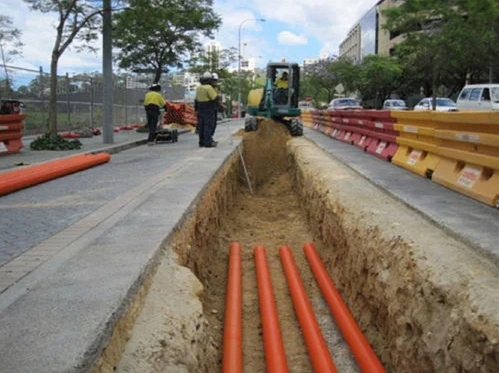Fiber optic underground cables are used to transmit data signals over long distances, typically buried underground for protection against environmental factors and physical damage. Here are some key specifications and considerations for fiber optic underground cables:


Construction: Underground fiber optic cables typically consist of several layers:
Core: Contains the optical fibers that transmit data signals.
Cladding: Surrounds the core to maintain signal integrity by reflecting light back into the core.
Buffer Coating: Protects the optical fibers from mechanical stress.
Strength Members: Provide tensile strength to the cable to withstand pulling forces during installation.
Jacket: Outer protective layer that shields the cable from moisture, soil chemicals, and physical damage.
Waterblocking: Underground cables are designed with water-blocking materials to prevent water ingress, which can degrade signal transmission and cause cable damage. Water-blocking materials may include water-swellable tapes or gels within the cable structure.
Armor: Some underground fiber optic cables may feature armor layers, such as corrugated steel or aluminum tape, to provide additional protection against rodent damage, digging, or other external impacts.
Direct Burial vs. Conduit Installation: Underground fiber optic cables can be installed directly buried in the ground or within protective conduits. Direct burial installation is simpler and more cost-effective but may require specialized cables with thicker jackets and additional protection. Conduit installation offers easier access for maintenance and allows for future cable upgrades but requires additional materials and labor for conduit installation.
Fiber Count and Type: Underground fiber optic cables can have various fiber counts, ranging from a few fibers to hundreds or even thousands of fibers, depending on the network capacity requirements. Single-mode fibers are commonly used for long-distance transmission, while multimode fibers may be used for shorter distances within buildings or campuses.
Temperature Rating: Underground cables must be designed to withstand a wide range of temperatures, from freezing cold to extreme heat, depending on the geographic location and installation depth.
UV Resistance: If the cable will be exposed to sunlight during installation or maintenance, UV-resistant jacket materials should be used to prevent degradation over time.
Compliance Standards: Underground fiber optic cables must comply with industry standards and regulations governing cable construction, optical performance, environmental durability, and safety.
Installation Depth: Cables should be buried at a sufficient depth to protect them from accidental damage caused by excavation, landscaping, or other construction activities. The recommended burial depth varies depending on factors such as local regulations, soil conditions, and the presence of other underground utilities.
Splice Enclosures: Underground fiber optic cables may require splice enclosures or vaults at splice points to protect splices from moisture, dust, and physical damage.
When selecting underground fiber optic cables, it's essential to consider factors such as installation environment, capacity requirements, budget constraints, and long-term maintenance needs. Consulting with cable manufacturers or network engineering professionals can help ensure the selection of the most suitable cable for the specific application.
03-21
202502-12
202509-12
202409-05
202408-16
202408-07
202408-06
202408-02
202407-30
202407-29
2024
